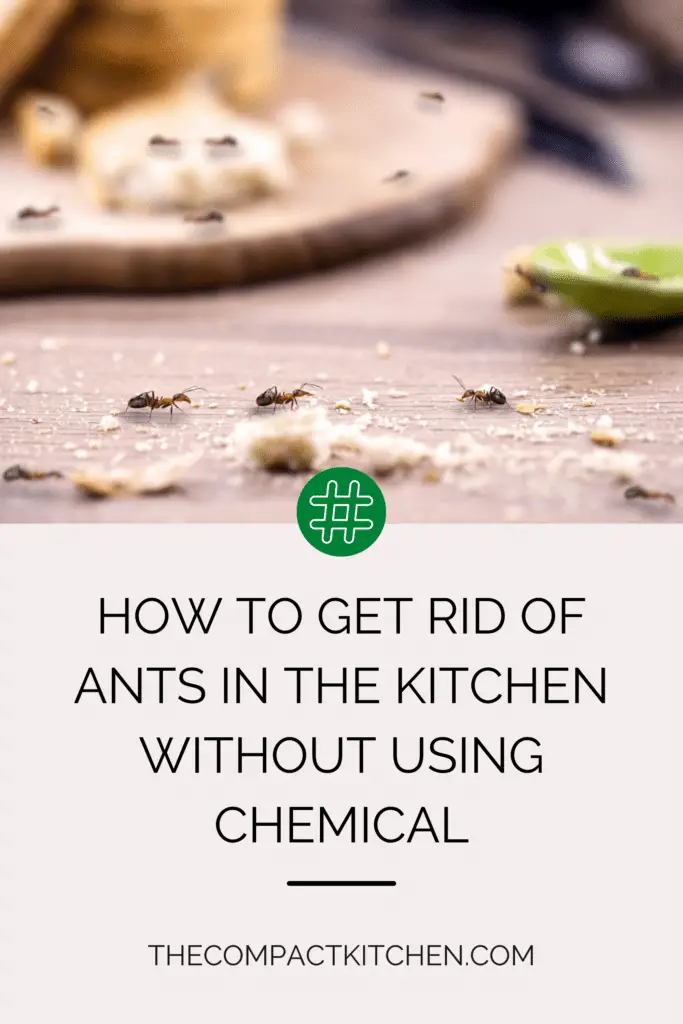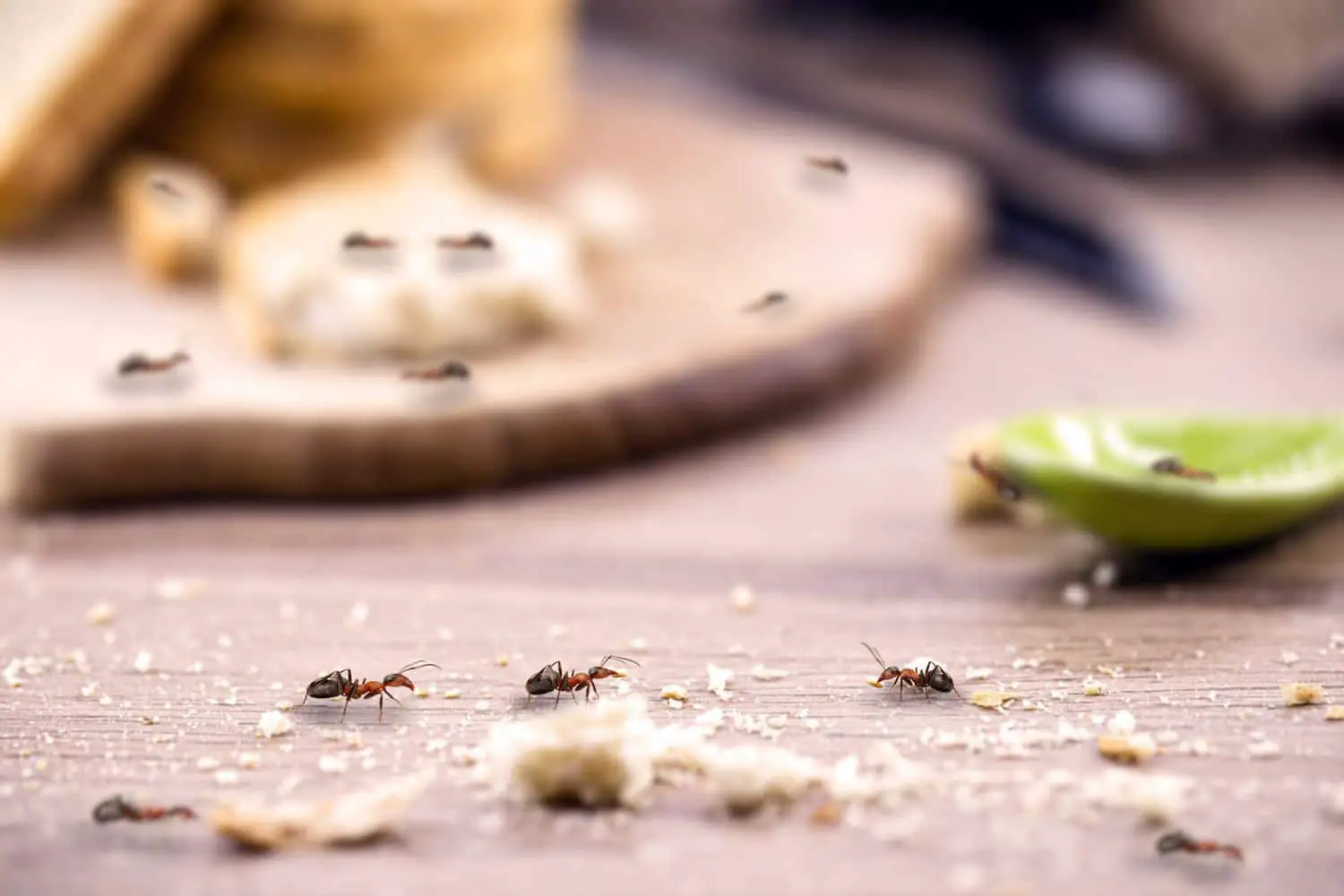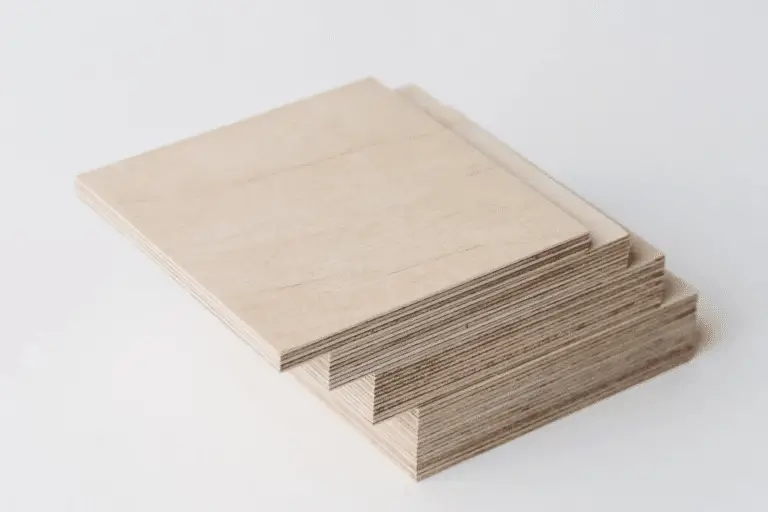Dealing with ants in the kitchen can be incredibly frustrating. These tiny invaders can quickly take over your space, making it feel like you’re losing control over your own home. However, reaching for harsh chemical pesticides isn’t the only option—and it shouldn’t be your first!
Not only can these be harmful to humans, but they also pose risks to pets and the environment. Fortunately, nature offers us a plethora of solutions to keep these pesky insects at bay, all while ensuring the safety and health of your household. In this guide, we’ll tell you how to get rid of ants in the kitchen effectively without using any type of chemical. They’re very easy to implement; everything you need is already in your pantry right now.
So, let’s dive in and reclaim your kitchen from these unwanted guests!
Citrus Fruits

Citrus fruits are not only delightful and refreshing for humans but also act as potent deterrents for ants. The strong, tangy aroma that we appreciate in oranges, lemons, and grapefruits is unpleasant and intolerable for these tiny invaders.
How Citrus Fruits Repel Ants
Ants navigate and communicate primarily through scent trails. The powerful and distinct smell of citrus fruits disrupts their olfactory navigation, making it difficult for them to track and locate food particles and residues. When exposed to citrus, ants lose their sense of direction and the ability to communicate with their fellow colony members effectively.
Utilizing Citrus Peels

One practical way to use citrus fruits as ant repellents is by utilizing their peels. After enjoying the fruit, do not discard the peels. Instead, allow them to dry. Once the peels are dried, grind them into a coarse powder. This powdered citrus peel can be sprinkled near entry points, in flower beds, and around potted plants in your kitchen. The scent acts as a barrier, deterring ants from crossing and accessing your space.
Lemon Juice Spray
Another effective method is using pure lemon juice. The juice can be sprayed directly onto surfaces and areas that ants frequent. Focus on openings, sinks, countertops, and tabletops. Applying lemon juice—or even a lemon-scented cleaner—daily to these surfaces can yield visible results over time. The acidic nature and strong scent of lemon juice not only repel ants but also help in keeping your kitchen surfaces clean and fresh.
Consistent Application
Consistency is key when using citrus-based remedies. Regular application enhances the effectiveness of the repellent, ensuring that ants do not grow accustomed to the scent. Over time, the continuous presence of the citrus aroma creates an environment that is inherently hostile to ants, keeping your kitchen free from these pesky intruders.
Harness the power of citrus fruits to maintain an ant-free kitchen. These natural, readily available, and non-toxic solutions offer a safe and pleasant-smelling alternative to harsh chemical repellents. With consistent use, you can protect your kitchen from ant invasions while enjoying a fresh and citrusy ambiance.
Cucumber Slices
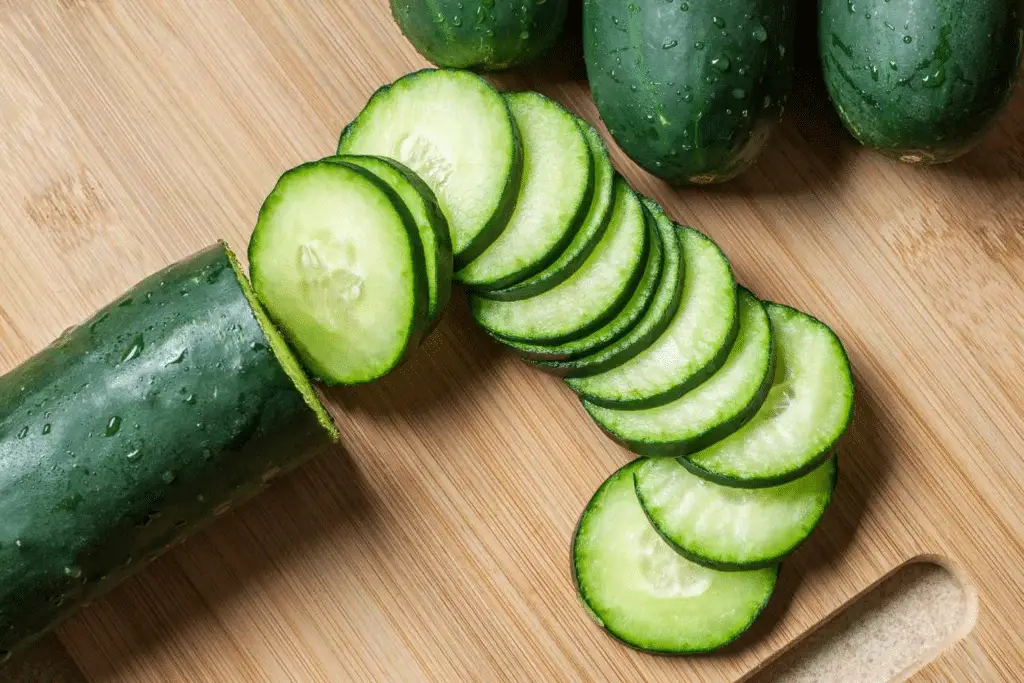
Cucumbers are another unexpected yet effective natural remedy to keep ants at bay. Similar to citrus fruits, cucumbers possess certain properties that ants find repulsive, making them an excellent deterrent.
Why Ants Dislike Cucumbers
Ants are turned off by the scent of cucumbers. There’s something in the chemical composition of cucumbers that eliminates the fungi ants are fond of. The scent of cucumber is troublesome for ants, making it a natural repellent.
How to Use Cucumber Slices
Identify the hot spots in your kitchen where ants frequently visit. These areas are usually around food and water sources, as well as any gaps, crevices, and holes that might act as entry points for the ants. Once these areas are identified, place cucumber peels or slices in these locations. The scent of the cucumber acts as a deterrent, repelling the ants and preventing them from accessing these areas.
Quick and Temporary Solution
Using cucumber slices or peels is a quick and temporary solution to deal with visible ants. It’s important to note that while cucumber slices will repel ants, they won’t eliminate an ant colony. Also, remember to remove the cucumber slices after a few hours. Leaving them for too long might attract other pests, like cockroaches, which aren’t deterred by cucumbers.
Precautions
While cucumbers are a safe and natural method to repel ants, it’s crucial to use this remedy as a preventive measure rather than a long-term solution. For a more permanent resolution to your ant problem, consider combining cucumber slices with other methods.
Cucumber slices offer a simple and immediate way to repel ants from your kitchen temporarily. This method is safe, natural, and uses something you might already have in your refrigerator. While it’s not a long-term solution, it provides quick relief from an ant invasion, giving you the time to implement more permanent ant-control measures.
Peppermint Essential Oil

Peppermint essential oil is a popular and effective natural remedy for repelling ants from your kitchen and bathroom areas. Its strong, refreshing scent is pleasant for humans but unbearable for ants, making it an excellent choice for keeping these pesky insects at bay.
How Peppermint Essential Oil Works
The potent smell of peppermint essential oil interferes with the ants’ sense of smell, preventing them from detecting food sources and navigating effectively. When exposed to peppermint, ants are disoriented and discouraged from entering the treated areas, helping you maintain an ant-free space.
Using Cotton Balls
For a simple and easy application, sprinkle a few drops of peppermint essential oil onto cotton balls and place them strategically in areas where ants are commonly found. Common hotspots include corners, near garbage cans, and along the paths that ants use to navigate through your kitchen and bathroom. The saturated cotton balls release the scent of peppermint into the air, creating an environment that ants will want to avoid.
Creating a Peppermint Spray
Alternatively, you can create a peppermint spray by mixing equal parts of mint-scented liquid soap and water in a spray bottle. This mixture can be sprayed directly onto groups of ants or along their trails. The soap in the mixture helps to break down the ants’ exoskeletons, while the peppermint scent acts as a strong repellent.
Consistent Application for Best Results
Consistency is crucial when using peppermint essential oil as a repellent. Regular application ensures that the scent remains potent and effective in deterring ants over time. Refresh the cotton balls or reapply the spray as needed to maintain a strong peppermint presence in the targeted areas.
Peppermint essential oil is not only a natural and safe method for repelling ants but also leaves your kitchen smelling fresh and clean. By incorporating this essential oil into your ant prevention routine, you can create a space that is both inviting for people and unappealing for ants. Whether you choose to use cotton balls or a spray, peppermint essential oil is a reliable choice for keeping ants out of your kitchen and bathroom areas.
Cinnamon
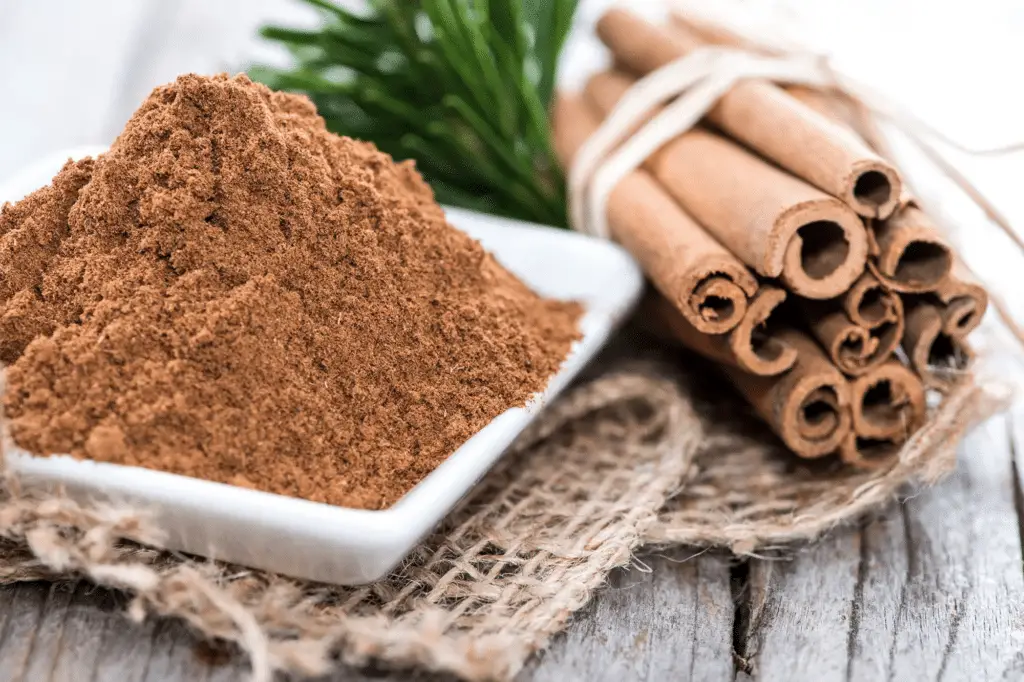
Cinnamon, a beloved spice known for its warm and sweet aroma, surprisingly doubles as an effective ant deterrent. Not only does it enhance the fragrance of your home, but it also plays a crucial role in keeping ants away.
Cinnamon’s Dual Function
Cinnamon acts as a dual agent in your home. While its delightful scent creates a cozy and inviting atmosphere, it simultaneously serves as a natural repellent against ants. The spice disrupts the pheromone trails that ants use to navigate, causing confusion and hindering their movement.
Using Various Forms of Cinnamon
Cinnamon can be utilized in various forms, including powder, oil, and sticks, all of which are effective in repelling ants. For immediate results, consider sprinkling powdered cinnamon at entry points where ants are seen entering. This creates a barrier that ants are reluctant to cross, effectively keeping them at bay.
For a more targeted approach, draw lines using cinnamon oil. You can apply the oil using a cotton swab to create barriers at entry points or around specific areas you wish to protect. This method is particularly useful for creating precise lines and barriers where powdered cinnamon might be too messy.
Cinnamon sticks can also be strategically placed around hot spots in your kitchen. Simply scatter the sticks near entry points, in pantry corners, or wherever you notice ant activity. The presence of the sticks will deter ants from approaching the area.
Creating a Cinnamon Spray
For broader application, mix cinnamon oil with water in a spray bottle. This concoction can be sprayed on ant trails, windows, doors, and cracks where ants enter your home. The spray not only repels ants but also leaves a pleasant scent in the treated areas.
Consistent Application
Consistency is key for the effectiveness of cinnamon-based ant repellents. Regular application helps maintain a scent strong enough to deter ants continually. Refresh the powdered cinnamon, reapply the oil, or replace the sticks as needed to ensure ongoing protection against ants.
Cinnamon is a versatile and natural solution to your ant problem. Its pleasant aroma and potent ant-repelling properties make it a favorite among homeowners seeking a safe and natural way to protect their kitchens from ant invasions. With consistent use, cinnamon can help you maintain an ant-free and fragrant kitchen.
Coffee Grounds
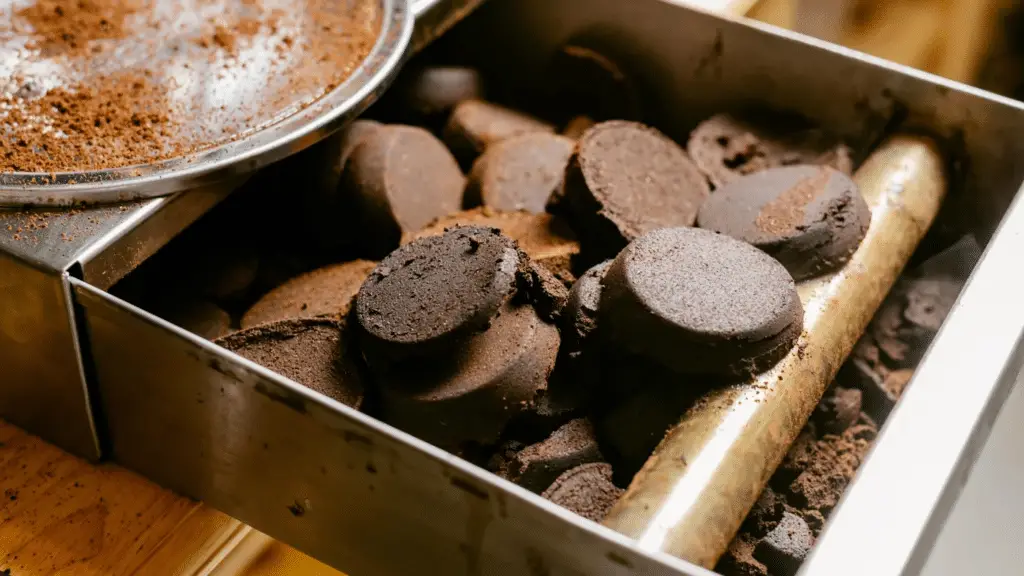
Coffee grounds, often discarded after brewing your favorite cup, can be a valuable ally in your battle against ants. Before you dispose of used coffee grounds, consider repurposing them as a natural ant repellent.
How Coffee Grounds Work
Coffee grounds possess a strong, distinct smell that ants find repulsive. Additionally, the texture and composition of coffee grounds make it difficult for ants to move across. When spread in areas frequented by ants, coffee grounds create an inhospitable environment that deters these pests.
Application of Coffee Grounds
- Cracks and Crevices: Place used coffee grounds directly into cracks, crevices, and gaps where ants enter your kitchen. The grounds act as a barrier, blocking entry points and preventing ants from invading your space.
- Around Plants: If you have potted plants in or near your kitchen, sprinkle coffee grounds around them. This not only keeps ants away but also enriches the soil with nutrients.
- Perimeter of Your House: For a broader defense, spread coffee grounds around the entire base of your home. While this requires a significant amount of coffee grounds, it forms a protective barrier against ants and other insects.
Enhanced Effectiveness with Peppermint Oil
For an added punch, mix used coffee grounds with a few drops of peppermint essential oil. Spread this mixture on countertops, near the garbage can, and in other areas where ants are commonly found. The combined scent of coffee and peppermint creates a powerful deterrent that is highly effective at keeping ants at bay.
Consistency is Key
Regular and consistent application of coffee grounds is essential for maintaining an ant-free kitchen. Refresh the grounds periodically to ensure that their repellent properties remain active and effective.
Used coffee grounds are not only eco-friendly but also an efficient method for ant control. By strategically placing coffee grounds in areas prone to ant activity, you can protect your kitchen from these persistent pests while recycling your coffee waste effectively. With the added benefit of being non-toxic and safe for household use, coffee grounds offer a practical and sustainable solution to your ant problem.
Tansy Flowers

Tansy flowers, while seemingly innocent and decorative, are a potent deterrent for ants. These flowers may appear attractive and delightful to us, but ants perceive them quite differently.
Why Ants Avoid Tansy Flowers
Tansy flowers emit a scent and possess properties that are unappealing to ants. While these flowers might look cute and harmless to humans, ants find them repulsive and tend to avoid areas where tansy flowers are present.
How to Use Tansy Flowers
- Planting Near Entry Points: Consider planting tansy flowers near your front door or other entry points to your home. These plants thrive under full or indirect sunlight and prefer fairly dry soil. Position them where they can act as a natural barrier against incoming ants.
- Protecting Other Plants: If you have herbs planted in the kitchen that you want to protect from ants, consider planting tansy flowers nearby. Their presence will help safeguard your beloved plants from being invaded by ants.
- Window Sills: Keeping dried tansy flowers on window sills is another effective way to repel ants. The dried flowers retain their ant-repellent properties and can act as a protective barrier for your home.
Maintaining Tansy Flowers
While tansy flowers are low-maintenance, it’s crucial to place them strategically for maximum effectiveness. Whether you choose to plant them or use dried flowers, ensure they are positioned in areas where ants are likely to enter or where you want to prevent ant activity.
Precautions
While tansy flowers are generally safe, always handle them with care and keep them out of reach of pets and children. Be aware of individual allergies and consult with a professional if you’re unsure.
Tansy flowers offer a natural and aesthetically pleasing way to keep ants at bay. Their repellent properties make them a wise addition to your home’s defense against ants. Incorporating tansy flowers into your ant prevention strategy can provide effective protection while adding a touch of beauty to your surroundings. With careful placement and minimal maintenance, tansy flowers can be a steadfast ally in your quest for an ant-free home.
Diatomaceous Earth
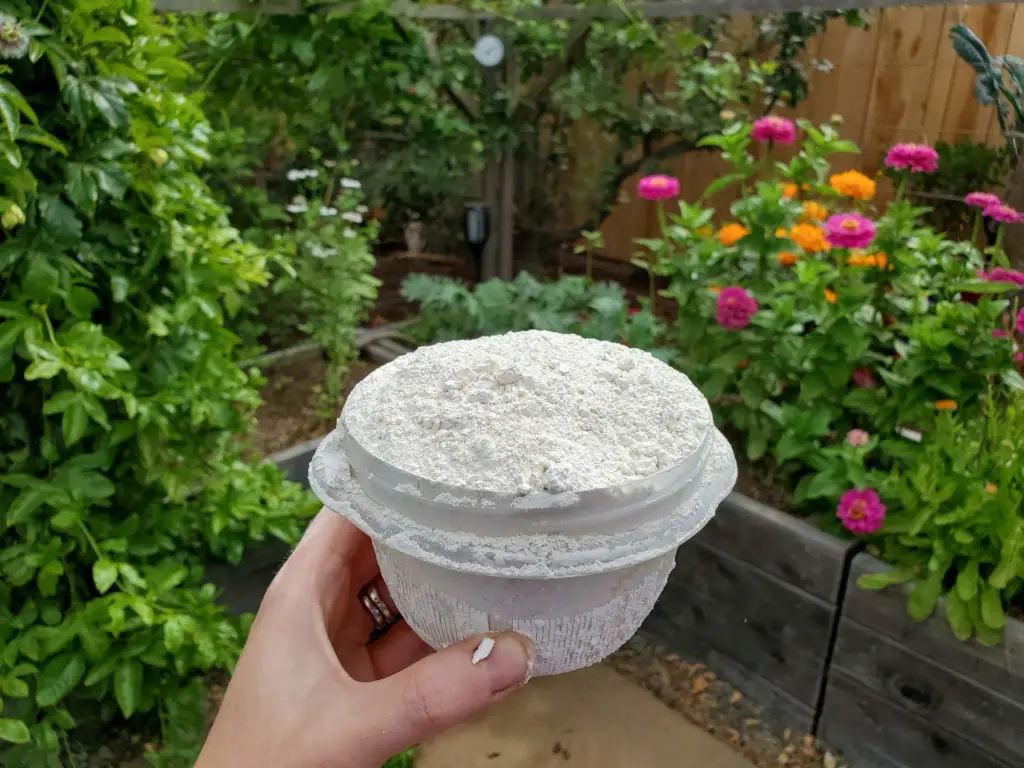
Diatomaceous Earth (DE) is a fine powder derived from fossilized algae, and it’s a powerful, natural insecticide that is safe for humans but deadly for ants.
How Diatomaceous Earth Works
Food-grade Diatomaceous Earth is composed of tiny, abrasive particles that cut through the exoskeletons of ants, causing them to dehydrate and die. It disrupts the physical integrity of the ants without introducing harmful chemicals into your home.
Application of Diatomaceous Earth
- Ant Trails: Sprinkle DE directly onto ant trails. The powder will adhere to the bodies of ants, leading to their eventual demise.
- Perimeters of Your House: Apply DE around the perimeters of your home to create a barrier that ants cannot cross without getting coated in the powder.
- Flower Beds: If you have flower beds that attract ants, consider applying DE to these areas. However, be cautious when applying near plants that attract bees, as DE can also be harmful to these beneficial insects.
Important Precautions
- Keep DE Dry: Diatomaceous Earth loses its effectiveness when wet. Ensure that the areas where you apply DE remain dry for the product to work efficiently.
- Layering: In some cases, a single layer of DE might not be sufficient. You may need to apply multiple layers for optimal results.
- Bee Safety: Be cautious not to harm beneficial insects like bees when applying DE. Avoid using it on flowering plants that attract pollinators.
Diatomaceous Earth is a potent, natural ant repellent that offers a non-toxic solution to your ant problem. Its ability to physically harm ants provides immediate and effective results without endangering the health of your household. By carefully applying DE to targeted areas, you can efficiently eliminate ants while minimizing risks to beneficial insects and plants. With its ease of use and powerful effects, Diatomaceous Earth is a valuable tool in achieving an ant-free kitchen.
Chalk

Chalk is a simple yet surprisingly effective tool for keeping ants at bay. This common household item can be used to draw barriers that ants are reluctant to cross, providing a safe and non-toxic method for ant control.
How Chalk Works
Chalk contains calcium carbonate, which interferes with an ant’s ability to follow scent trails left by other ants. When you draw lines with chalk, ants are discouraged from crossing, effectively disrupting their movement and preventing them from reaching food sources or other attractions in your home.
Application of Chalk

Drawing Lines: Create barriers by drawing chalk lines around entry points like doors and windows. You can also outline areas where food is stored or prepared to keep ants away.
Children’s Participation: Engaging your children in the process can be both educational and fun. Allow them to draw chalk lines, turning the activity into a playful yet practical learning experience.
Consistency for Effectiveness
Chalk lines will eventually fade or be erased over time, so regular application is necessary. Consistently redraw the lines to maintain an effective barrier against ants.
Precautions
While chalk is non-toxic and safe, it’s important to use it cautiously to avoid creating a mess on your floors or walls. Be mindful of where you draw the lines and ensure they can be easily cleaned up later.
Chalk offers a straightforward, safe, and engaging way to control ant movement in your home. Its ability to disrupt ant trails makes it a handy tool for preventing ant invasions. With regular application and careful placement, chalk lines can serve as a simple yet powerful deterrent against ants, providing you with a practical solution to keep these pesky insects at bay.
Baking Soda and Powdered Sugar
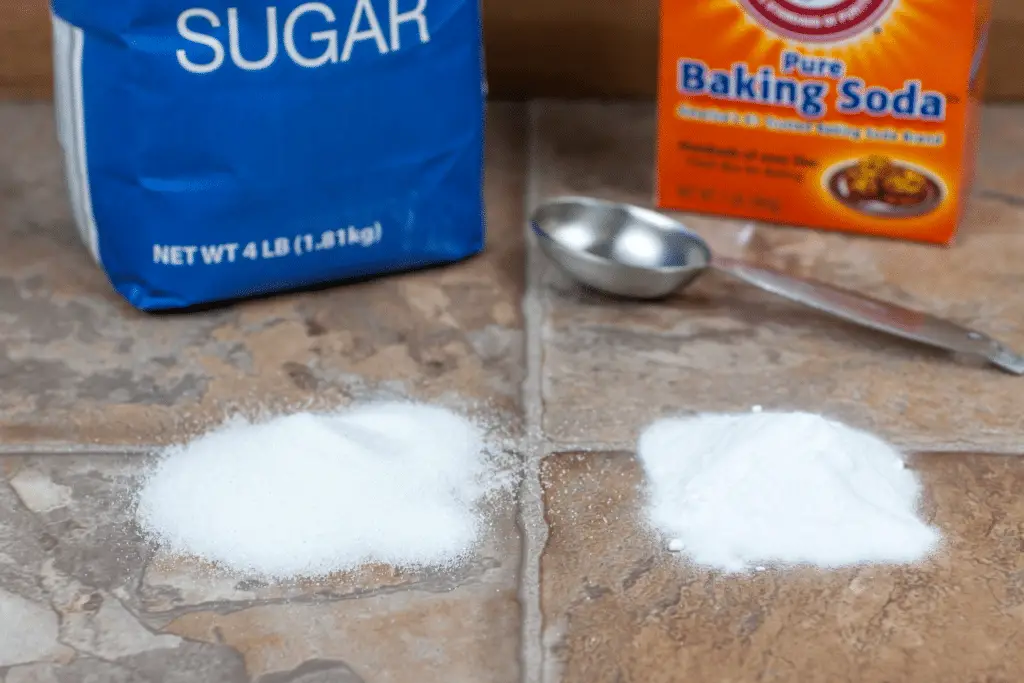
A combination of baking soda and powdered sugar can act as an effective and inexpensive ant killer. While ants are attracted to the sweetness of sugar, baking soda is toxic to them, creating a lethal bait that they can’t resist.
How the Mixture Works
Ants are drawn to the sugar, but they can’t differentiate between the sugar and baking soda in the mixture. Once ingested, the baking soda reacts with the acidic substances in their bodies, leading to their extermination. The sugar acts as a bait, while the baking soda serves as a poison to the ants.
Preparing the Bait
- Creating the Mixture: Combine baking soda and powdered sugar in a 1:1 ratio. A mixture of ¾ tablespoon of each ingredient should be sufficient to create an effective bait.
- Placement: Distribute the bait where ants frequently traverse. You can place the mixture directly into areas that ants infest or on a jar lid to contain the bait.
Application Tips
Target High Traffic Areas: Identify and target areas where you notice significant ant activity. Common places include near food storage areas, along ant trails, and close to their entry points.
Monitor and Refill: Keep an eye on the bait stations and refill them as needed. Continuous availability of the bait ensures that more ants are attracted and eliminated.
Safety Precautions
While baking soda and sugar are safe for humans, the bait should be placed out of reach of children and pets to prevent ingestion.
The baking soda and powdered sugar mixture is a cost-effective and straightforward method to deal with an ant infestation. Its preparation is simple, and its ingredients are commonly found in households. By strategically placing this lethal bait in areas frequented by ants, you can significantly reduce and eliminate the ant population in your home, ensuring a comfortable and ant-free living environment.
Cornmeal
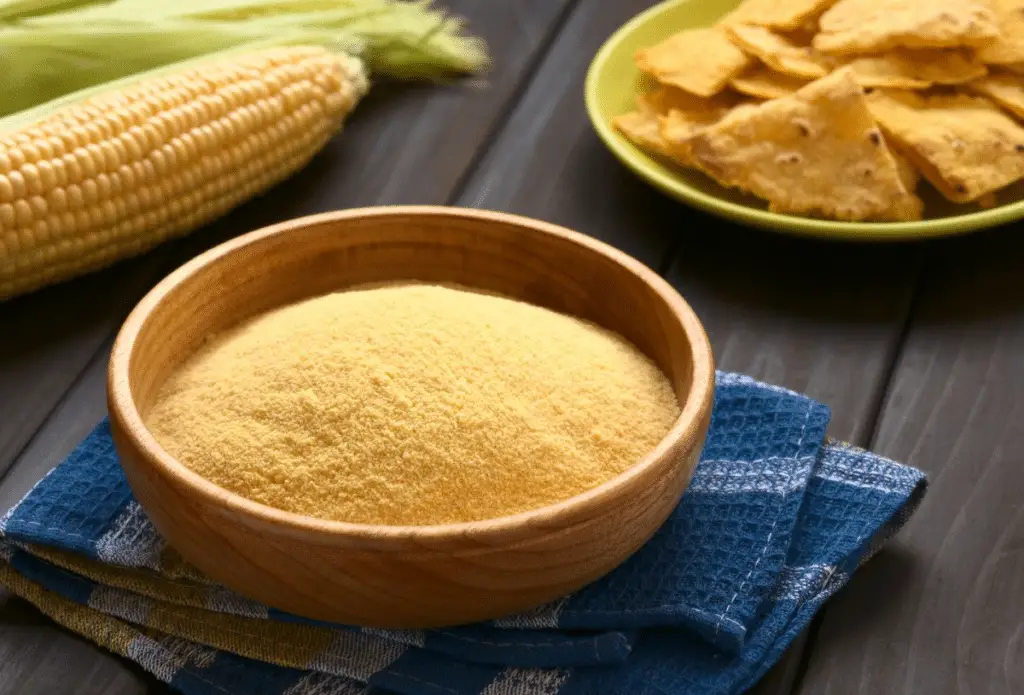
Cornmeal is an unconventional but effective solution to handle ant infestations. While it is not an instant remedy, it is safe, non-toxic, and a considerably inexpensive option to try out.
How Cornmeal Works
Ants are attracted to cornmeal as they perceive it as food. However, they are unable to digest it. When ants consume cornmeal, it interferes with their digestive system, ultimately leading to their demise. It’s a bait that attracts ants but is indigestible to them.
Application of Cornmeal
- Sprinkling Cornmeal: Distribute cornmeal on ant trails and near their nests. Ants will be drawn to the cornmeal, consume it, and carry it back to their colony, sharing the indigestible substance with other ants.
- Targeting Specific Areas: Focus on areas where you notice significant ant activity. Cornmeal can be sprinkled near food storage areas, along the paths that ants use, and around their entry points into your home.
Patiently Waiting for Results
Cornmeal isn’t the quickest solution, but it is effective over time. Since it acts as a slow-acting bait, you need to be patient and allow time for the ants to consume and share the cornmeal within their colony.
Safety First
Cornmeal is safe for use around children and pets, making it an ideal solution for households. It poses no risk to humans, and you can use it liberally without worrying about toxic effects.
Cornmeal is a simple and safe alternative for ant control. While it may take some time to see results, it’s a low-risk option that can effectively reduce the ant population in your home without the use of harsh chemicals. With patience and strategic application, cornmeal can be a valuable tool in your ant prevention arsenal.
Vinegar
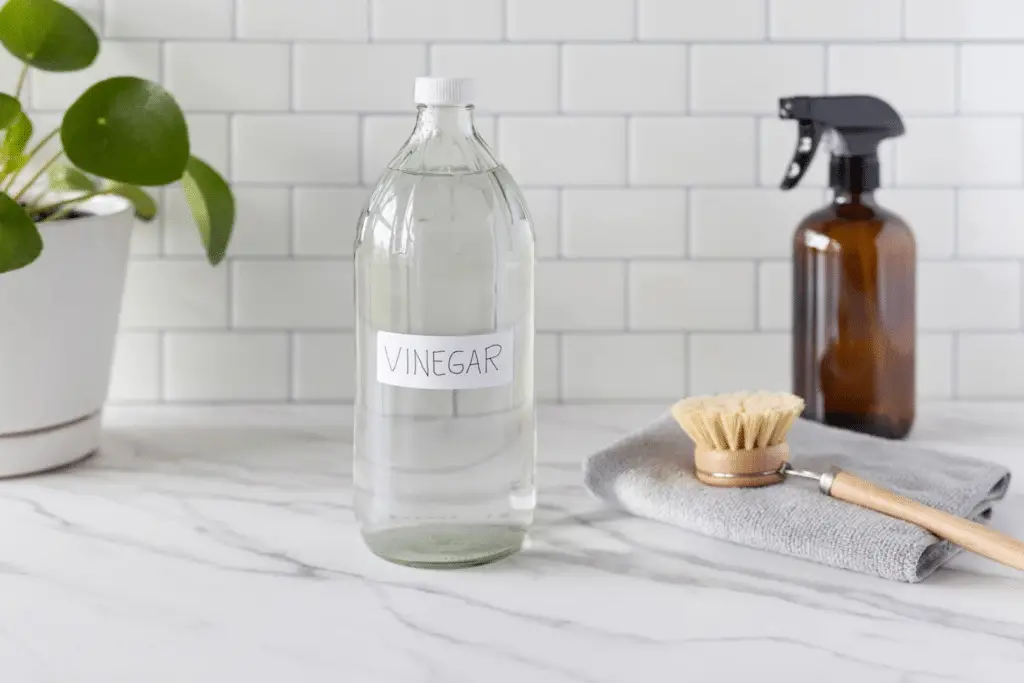
Vinegar is a household staple that can also double as an effective ant repellent. Not only is it a versatile cleaning agent, but it’s also a powerful deterrent against ant invasions due to its acidity and strong odor that ants despise.
How Vinegar Works
Ants absolutely detest the smell of vinegar. When applied, vinegar disrupts the pheromone trails that ants use to navigate, disorienting them and preventing further infestation. Additionally, its acidic nature is harmful to ants, making it an effective repellent.
Preparing and Using Vinegar Solution
- Creating the Mixture: Combine vinegar and water in a 1:1 ratio in a spray bottle. This diluted solution is potent enough to repel ants while minimizing the vinegar smell.
- Application: Spray the vinegar solution directly onto ants, around windowsills, doorways, and other areas where ants are observed. The solution acts instantly, repelling ants on contact.
- Cleaning with Vinegar: You can also use the vinegar solution for cleaning floors, windows, and countertops. Not only does it clean surfaces, but it also creates an environment that is uninviting to ants.
After Application
Once the vinegar solution dries, it leaves no lingering odor. This means you have a repellent that acts effectively without leaving your home smelling like vinegar for long periods.
Safety Precautions
Vinegar is safe and non-toxic to humans and pets but always handle it with care to avoid eye and skin irritation.
Utilizing vinegar as an ant repellent is a cost-effective and safe method to protect your home from ant invasions. Its accessibility and ease of use make it a practical choice for immediate ant control. With a simple spray, you can defend your home against ants while keeping your space clean and fresh.
Borax, Water, and Sugar Mix

The mixture of Borax, water, and sugar is a potent solution for ant control. This concoction attracts ants with its sweetness while the Borax acts as a toxic agent to them, making it an effective bait that leads to the elimination of the entire colony.
How the Borax Mixture Works
The sugar in the mixture serves as bait, attracting ants due to its sweetness. Ants are unable to distinguish between sugar and Borax; hence they consume both. Once ingested, Borax disrupts their digestive system and proves fatal, not only to the worker ants but also to the ants in the colony to whom the bait is carried back.
Preparing the Bait
- Creating the Mixture: Form a thin paste by combining powdered Borax, sugar, and water in equal parts. A few tablespoons of this paste placed on a jar lid can act as an effective bait station.
- Enhancing Attractiveness: You can experiment by adding a touch of peanut butter to the mixture, making it even more enticing for the ants.
Application Tips
- Placement: Set the bait in areas where ant activity is high. The ants will be drawn to the bait, consume it, and carry it back to their colony, spreading the toxic Borax among other ants.
- Monitoring: The paste dries out in a couple of days. If it hasn’t yielded results by then, you might need to prepare and set out a fresh batch.
Safety Precautions:
While Borax is toxic to ants, it should be handled with care as it can also be harmful to children and pets. Always place the bait stations out of reach of kids and animals to prevent accidental ingestion.
The Borax, water, and sugar mixture is a powerful ant control solution that targets the entire colony. Its dual action of attracting and poisoning ants makes it a reliable method for ant eradication. However, careful handling and placement are crucial to ensure the safety of your household while effectively dealing with the ant problem. With proper use, this mixture can provide a significant relief from ant infestations.
Boiling Water and Dish Soap
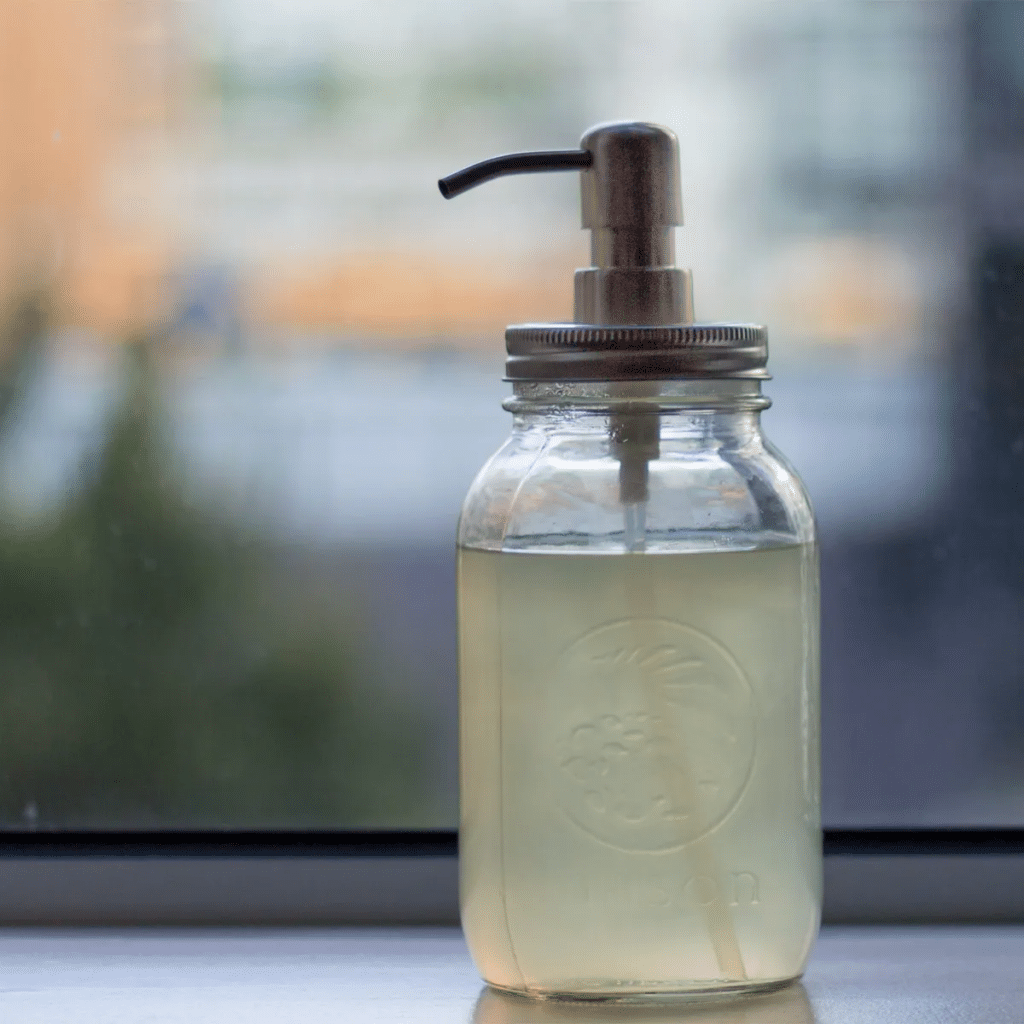
Utilizing a combination of boiling water and dish soap is a straightforward and efficient method to address visible ants and their colonies. This simple solution can help you swiftly get rid of ants while also managing other issues like weeds in sidewalk cracks.
How the Mixture Works
Hot Water: Ants cannot withstand hot water, and it induces immediate mortality. Pouring boiling water directly onto ant colonies can be a powerful measure to eradicate them.
Dish Soap: The addition of liquid dish soap helps in breaking down the exoskeletons of ants, making the hot water even more effective.
Preparing and Using the Solution
- Creating the Mixture: Fill a spray bottle with water and add a sufficient amount of liquid dish soap. For direct application on colonies, simply boil water and add dish soap.
- Application: Spray the soapy water directly onto visible ants. For ant colonies, carefully pour the boiling soapy water onto them.
Additional Benefits:
- Weed Control: The boiling soapy water not only targets ants but also effectively kills weeds growing in sidewalk cracks or driveways.
Precautions
- Avoiding Plant Damage: While the mixture is potent against ants and weeds, it can also harm beneficial plants. Exercise caution when applying near plants you wish to preserve.
- Safety First: Handling boiling water requires care to prevent burns. Always handle with caution.
The combination of boiling water and dish soap offers a quick and easy solution to ant problems. Its dual action of heat and soap effectively eliminates ants on contact, providing immediate relief from infestations. With careful application, this method can be a safe and effective way to maintain an ant-free environment in your home.
Mini Moat Technique

The Mini Moat Technique is a creative and effective method to prevent ants from accessing specific areas, such as your potted plants or pet food bowls. This approach is based on the simple principle that ants cannot swim, thus using water as a barrier.
How the Mini Moat Technique Works:
- Water Barrier: By creating a water barrier around the target area, ants are prevented from reaching the protected zone due to their inability to cross water.
- Enhanced with Cinnamon: For added effectiveness, you can sprinkle cinnamon powder into the water or place a cinnamon stick directly into the soil of potted plants. Ants are repelled by cinnamon, making the barrier even more formidable.
Setting Up a Mini Moat:
- For Potted Plants: Place the container with plants on a tray filled with water. This creates a water barrier that ants cannot cross, protecting your plants from infestation.
- For Pet Food Bowls: Position the pet food bowl in the center of a larger tray or lid filled with water. This prevents ants from reaching the food while allowing your pets to eat undisturbed.
Practical Application
- Protecting Plants: Some ants are attracted to plants. The Mini Moat Technique safeguards both potted and planted flora from being a home to ants.
- Securing Pet Food: If you have pets, their food bowls can attract ants. Using this technique keeps the ants at bay without using harmful chemicals near your pets’ food.
The Mini Moat Technique is a clever, safe, and natural way to protect specific areas from ant invasions. It’s especially useful for safeguarding plants and pet food bowls without resorting to chemical repellents. Easy to set up and maintain, this technique provides a simple solution to keep ants at a distance, ensuring the sanctity of your protected zones.
Conclusion – How to get rid of Ants in the kitchen
There you have it! We’ve explored a variety of effective, user-friendly ant control methods, each with its unique benefits for different needs. Before selecting a technique, consider your specific ant issue and always prioritize safety, especially around children and pets.
Have you tried any listed methods, or do you have other effective strategies? Share your experiences and insights! Your feedback not only supports our community but also assists others in their ant control efforts.
If this guide was helpful, explore our other resources for more wonderful kitchen tips!
- Small Kitchen, Big Smell? No Problem!
- How To Hide Kitchen Vent Pipe – 13 Practical Ideas
- How to Fix a Clogged Kitchen Sink (Free & No Chemicals)
